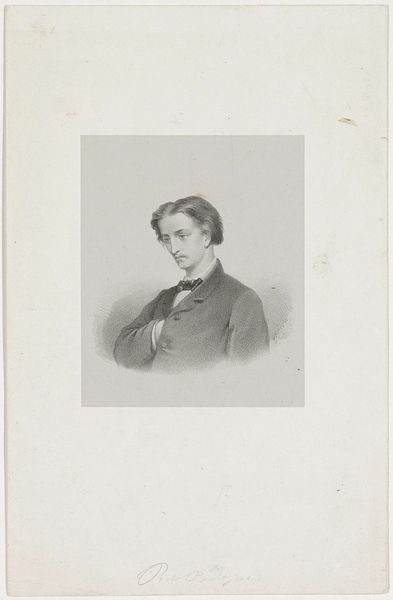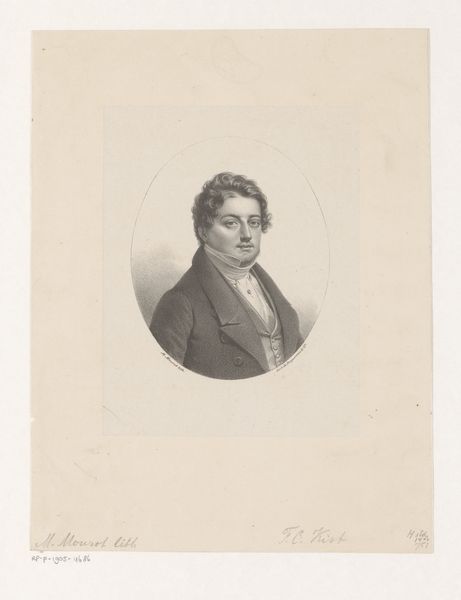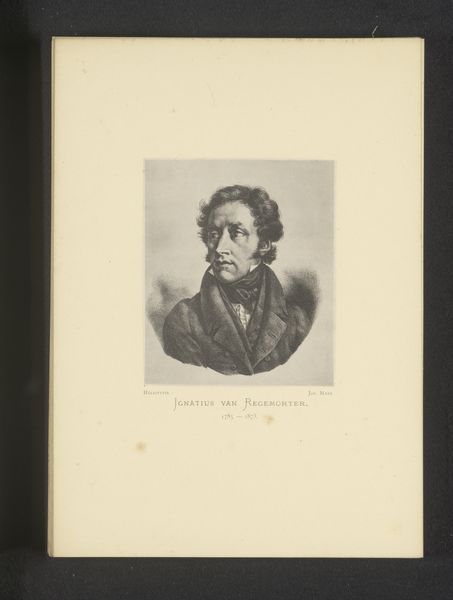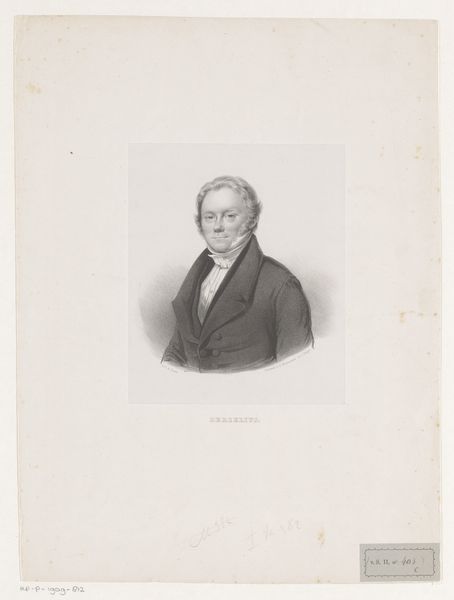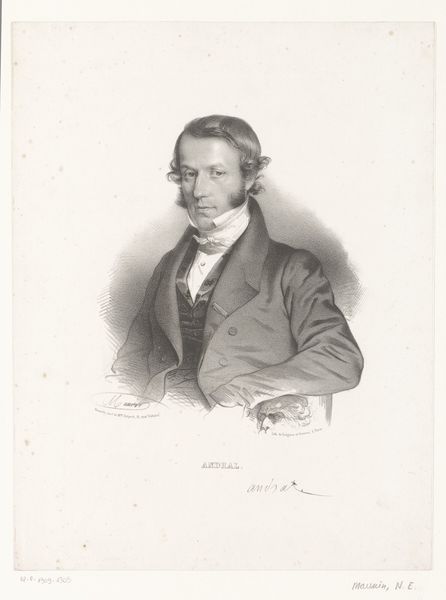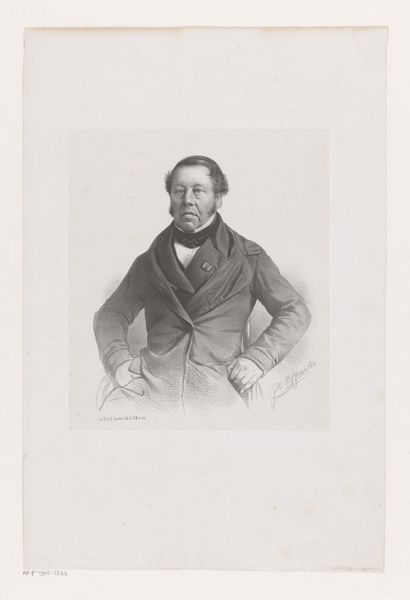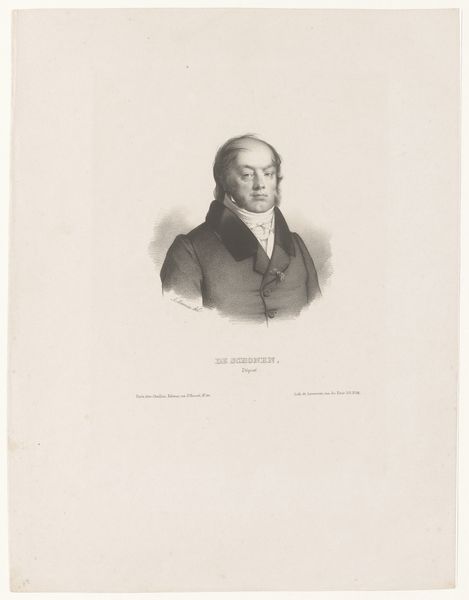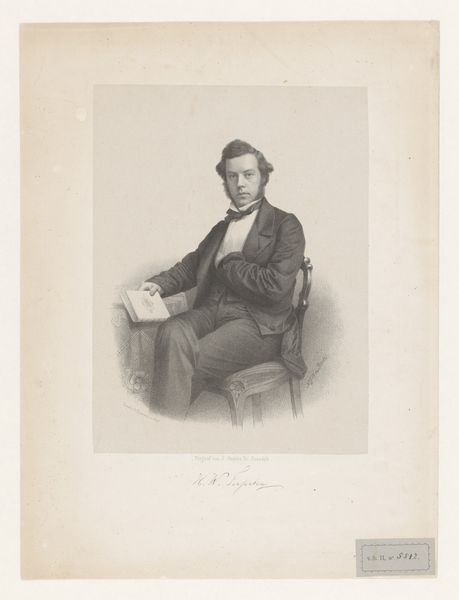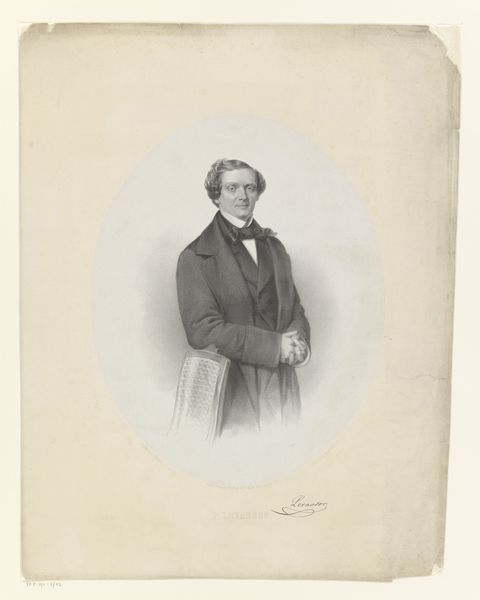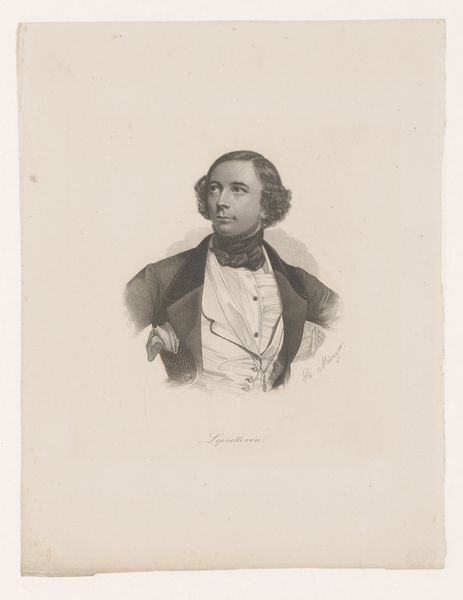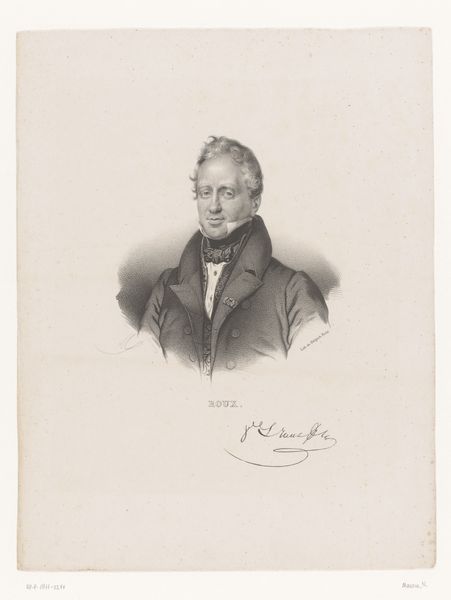
Portret van Frederik Christiaan Hendrik Taets van Amerongen c. 1851 - 1883
0:00
0:00
engraving
#
portrait
#
pencil drawn
#
charcoal drawing
#
portrait reference
#
pencil drawing
#
engraving
#
realism
Dimensions: height 450 mm, width 295 mm
Copyright: Rijks Museum: Open Domain
Curator: Here we have an engraving, dating approximately from 1851 to 1883, titled "Portret van Frederik Christiaan Hendrik Taets van Amerongen," created by Johan Hendrik Hoffmeister. Editor: The immediate feeling I get is one of formality and constraint. He seems trapped, almost suffocated by the high collar and tightly buttoned coat. There's a distinct lack of dynamism in his gaze, and he looks tired, perhaps even burdened. Curator: Absolutely. This was the age of formalized portraiture, used primarily to project status and lineage. Portraits served a very specific social function, especially within the Dutch elite, to cement power structures. The realism conveys this ideal; everything from his clothing to his posture reflects a particular image meant for public consumption. Editor: The meticulous details enhance that sense of power. You see every button, every crease in his coat. This speaks to the immense social pressures on men to maintain a facade of strength and composure during a time of immense political change in Europe. Who exactly was Frederik Christiaan Hendrik Taets van Amerongen? Curator: He was part of the Dutch aristocracy. These individuals were deeply entwined with the colonial structures and societal hierarchies of the time. An artwork such as this would be showcased in specific social contexts: homes, institutions, serving as an indicator of status. Editor: Considering its place and function, this makes me reflect on who has access to having their stories told. Where were portraits of women, minorities, or people who didn't belong to these privileged spheres? This representation serves not just to immortalize an individual, but the values of a societal power structure as well. Curator: That’s an important point to consider. The piece serves as a visual record, reminding us how imagery can reinforce specific cultural narratives, which frequently occur from an exclusionary historical point of view. Editor: Exactly, and seeing this today pushes me to actively seek out and amplify the neglected stories of marginalized voices within the context of Dutch society at this moment. Curator: And to analyze those gaps, to better understand who dictates history.
Comments
No comments
Be the first to comment and join the conversation on the ultimate creative platform.
